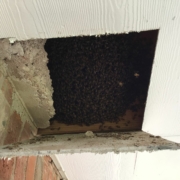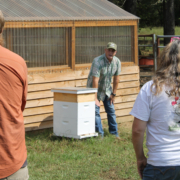Free Bees, Part Two: Keeping Them
 Print This Post
Print This Post
By Justin Duncan, NCAT Agriculture Specialist
In a previous blog, I detailed how to find free bees. Finding them can be relatively easy. Swarm? They aren’t starving? Sweep them gently into a nuc (a five-frame starter hive). It’s truly one of the loveliest experiences a beekeeper can have.
What’s in the awaiting nuc? I usually have a few frames of drawn comb—they smell like home or at least a home. This takes the burden of finding a new place and building comb off of the burgeoning new colony. Age-old wisdom brought to us by the proverbial horse that was led to water but not forced to drink also applies to bees. Putting them in a box doesn’t mean they will stay. However, the drawn comb is a powerful motivation to stay put.
Luckily, there are steps that can be taken to prevent absconsion, or the theft of bees perpetrated by their self-same selves. One such step is to make sure they are going into a suitable place. It needs to be clean enough to have a smell that doesn’t offend the bees. Think about where they would choose to go on their own in nature, a hollowed out tree or log—so, the earthy scent of slowly decaying wood. In these modern times, our houses make great homes for honey bees with all their voids framed in wood—so, mostly-dry wood scent is also acceptable. Remember, bees rely heavily on their olfactory senses so if you put them somewhere that doesn’t smell good to them, they aren’t going to stay.
When dealing with swarms, I take a few things into consideration. One is that swarms are transient. They are looking for a new place and wherever they are is just a stopping point, so where you put them has to be better than what their scout bees have found. The precaution against them leaving is to secure them in the nuc by taping up the entrance. I also provide them with some drawn comb so the queen has a place to start laying eggs. Once she starts laying, the colony is mostly committed to staying.
Swarms are also usually full of honey. The bees fill up on honey before swarming (see my previous blog on making splits). As long as they are full of honey, they are not likely to sting you while you are coaxing them into their new home. However, a starving swarm has nothing to live for and will sting, so I suit up just in case. That being said, I feed newly caught swarms sugar/water syrup with a pinch of sea salt. They may not accept it at first because they are full of honey, depending on how long it was since they left their home, but eventually they will. Once they know resources are available, they are more likely to stay.
Some nucs come with queen excluder entrances, and these are helpful in keeping the queen in place. If she cannot fly away, then they are not going anywhere either. These are especially effective for keeping hives that have been removed from houses or other spaces where the bees are unwelcome. I’ll cover more about hive removal in a future blog.
Related ATTRA Resources:
Free Bees, Part One: Keeping Them
Beekeeping Basics: Making Splits
Beekeeping: Overwintering Bees in Warm Places
Episode 214. Attracting and Protecting Pollinators
Alternative Pollinators: Native Bees
This blog is produced by the National Center for Appropriate Technology through the ATTRA Sustainable Agriculture program, under a cooperative agreement with USDA Rural Development. ATTRA.NCAT.ORG.

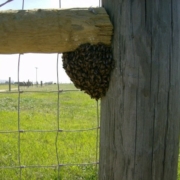
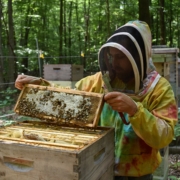
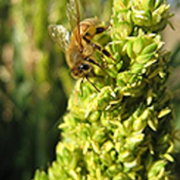

 USDA photo by Lance Cheung
USDA photo by Lance Cheung